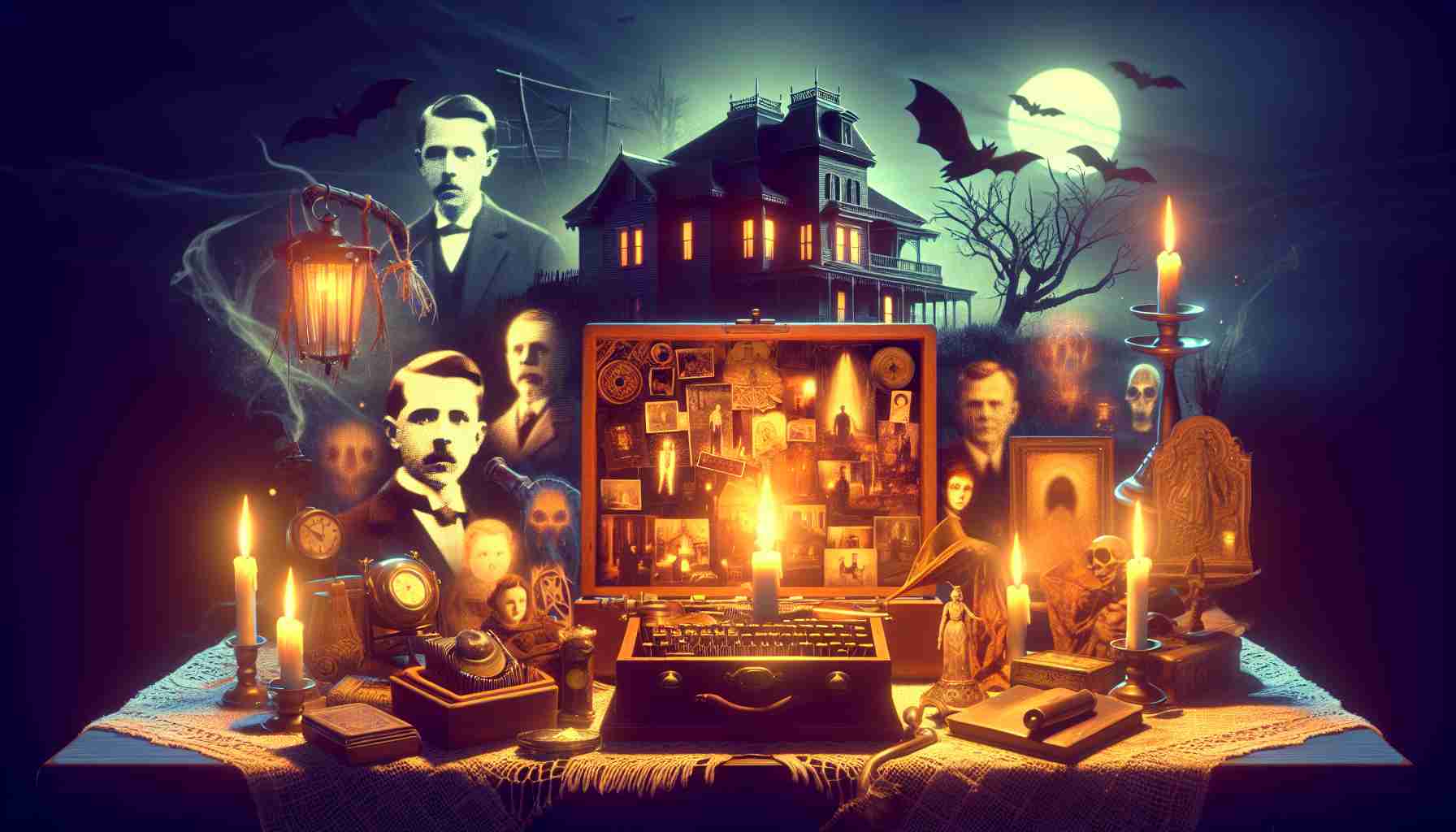- Ed Warren gained fame through pop culture, especially via The Conjuring series, with stories of poltergeists and haunted dolls.
- He, along with his clairvoyant partner Lorraine, rose to prominence in the 1970s and ’80s through notorious paranormal investigations.
- The authenticity of the Warrens’ accounts, such as the Enfield poltergeist and Amityville Horror, has been questioned, with allegations of embellishment.
- Ed Warren’s personal life added controversy, with claims of an illicit relationship contrasting his public image.
- Before fame, Warren served in the Navy and was an artist, painting haunted scenes of New England.
- Warren’s story remains captivating, acting as both a source of fascination and a reminder of skepticism’s importance in the world of the unexplained.
Ed Warren’s name shudders through the corridors of pop culture, largely thanks to The Conjuring film series. His life, woven with spectral tales of poltergeists and possessed dolls, has been transformed into cinematic gold. Yet, Warren’s mystique began long before Hollywood’s spotlight found him. He and Lorraine, his clairvoyant partner, made their mark on the 1970s and ’80s by diving headfirst into some of the era’s most chilling paranormal investigations.
Their notoriety sprouted not just from their ghostly pursuits but from the swirling rumors and discrepancies that clouded their stories. Tales of the Enfield poltergeist or the Amityville Horror became legendary partly due to the Warrens’ involvement, but the deeper one digs, the murkier their claims become. Some question the authenticity of their accounts, hinting at embellishments or outright fabrications—a sinister undercurrent in their legacy.
Equally unsettling are the allegations shadowing Ed Warren’s personal life, specifically claims of an illicit relationship marked by a stark contrast to the devout image he projected. Critics dismissed him as a charlatan, casting doubt on whether the real Warren bore any resemblance to his celluloid depiction.
Before the specter-chasing, Warren‘s life was marked by otherworldly leaps of faith—first in the Navy, then as an artist capturing haunted New England on canvas. These artistic beginnings, coupled with Lorraine’s mediumistic claims, paved their path toward founding the NESPR, unlocking doors to seemingly haunted spaces and future fame.
Yet beneath the layers of intrigue and controversy, one notion persists: In a world obsessed with the unexplained, Warren’s story continues to enthrall, whether as a lesson in fascination or a cautionary tale about the limits of belief.
The Untold Truths Behind Ed Warren’s Paranormal Legacy
Ed and Lorraine Warren: Beyond the Paranormal
Ed Warren’s legacy extends far beyond the confines of what popular films like The Conjuring depict. His life, colored with ghostly legends and haunting investigations, began well before he found himself in Hollywood’s limelight. Here, we dive into several aspects not covered in mainstream narratives.
The Foundations of NESPR
The New England Society for Psychic Research (NESPR) was founded by Ed and Lorraine Warren in 1952, marking the beginning of their official journey into paranormal investigation. The organization became a platform through which they explored numerous paranormal phenomena, providing lectures at college campuses, and authoring books that documented their experiences.
Pros and Cons of Paranormal Investigation
# Pros
1. Cultural Impact: The Warrens brought mainstream attention to paranormal phenomena, influencing pop culture and inspiring films and literature.
2. Public Engagement: Through NESPR, they influenced a broader conversation about the supernatural, prompting both belief and skepticism.
# Cons
1. Credibility Issues: Critics argue that the Warrens’ stories were often exaggerated or fabricated, casting doubt on their authenticity.
2. Ethical Concerns: Concerns about exploiting vulnerable families dealing with potential psychological issues were prevalent.
Comparative Market Analysis
While the movies based on the Warrens’ cases are blockbusters, the real market for paranormal investigation is more niche. The field includes both serious academic interest in the unexplained and entertainment-based paranormal tourism and media.
Limitations and Controversies in Warren’s Works
– Authenticity: Many skeptics, including scientific communities, argue that the Warren’s cases lack empirical evidence and often rely on anecdotal claims.
– Controversial Investigations: Investigations like the Amityville Horror have been debunked or deemed hoaxes, yet the stories persist in popular culture.
Security and Ethical Aspects
With any investigation into the paranormal, especially those involving living families, ensuring the physical and psychological safety of all parties involved should be a priority. There are also ethical questions about the potential emotional harm caused by such investigations.
Predictions and Future Interests
Interest in the Warrens’ investigations suggests a growing appetite for exploring the paranormal. Future advancements may enhance methods for investigating supernatural claims, leading to more definitive conclusions and perhaps increasing credibility.
How to Conduct a Legitimate Paranormal Investigation
1. Research Historical Context: Understand the history of the site or object believed to be haunted.
2. Use of Technology: Employ gadgets like EMF meters, digital recorders, and thermal cameras.
3. Maintain Objectivity: Document everything meticulously and rely on evidence-based approaches.
4. Legal Considerations: Always seek permission for site investigations and respect private property.
For more information, visit these trusted sites:
– History
– Britannica
Final Thoughts
Ed Warren remains a figure of intrigue, embodying the complex intersection of belief, skepticism, and the unending quest for answers to the unknown. Whether viewed as paragons of paranormal investigation or subjects of scrutiny, the Warrens’ legacy is cemented in both the realm of the supernatural and modern storytelling.



















